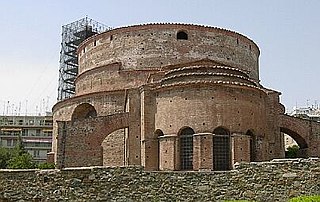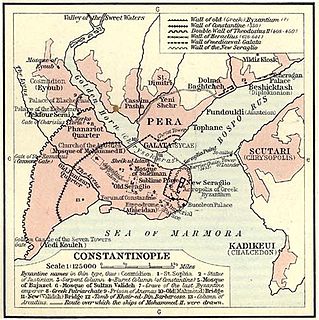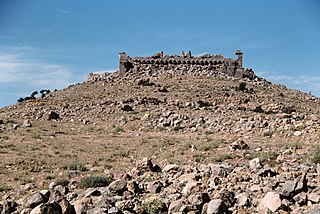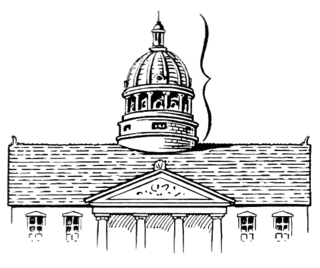 W
WByzantine architecture is the architecture of the Byzantine Empire, or Eastern Roman Empire.
 W
WThe Byzantine Revival was an architectural revival movement, most frequently seen in religious, institutional and public buildings. It incorporates elements of the Byzantine style associated with Eastern and Orthodox Christian architecture dating from the 5th through 11th centuries, notably that of Constantinople and the Exarchate of Ravenna. Neo-Byzantine architecture emerged in the 1840s in Western Europe and peaked in the last quarter of the 19th century in the Russian Empire, and later Bulgaria. The Neo-Byzantine school was active in Yugoslavia between World War I and World War II.
 W
WAblaq is an architectural technique involving alternating or fluctuating rows of light and dark stone. Records trace the beginnings of this type of masonry technique to the southern parts of Syria. It is associated as an Arabic term, especially as related to Arabic Islamic architectural decoration. The first recorded use of the term ablaq pertained to repairs of the Great Mosque of Damascus in 1109, but the technique itself was used much earlier.
 W
WAncona Cathedral is a Roman Catholic cathedral in Ancona, central Italy, dedicated to Saint Cyriacus. It is the seat of the Archbishop of Ancona. The building is an example of mixed Romanesque-Byzantine and Gothic elements, and stands on the site of the former acropolis of the Greek city, the Guasco hill which overlooks Ancona and its gulf.
 W
WThe Arch of Galerius or Kamara (Καμάρα) and the Rotunda (Ροτόντα) are neighbouring early 4th-century AD monuments in the city of Thessaloniki, in the region of Central Macedonia in northern Greece.
 W
WThe architecture of Istanbul describes a large mixture of structures which reflect the many influences that have made an indelible mark in all districts of the city. The ancient part of the city is still partially surrounded by the Walls of Constantinople, erected in the 5th century by Emperor Theodosius II to protect the city from invasion. The architecture inside the city proper contains buildings and structures which came from Byzantine, Genoese, Ottoman, and modern Turkish sources. The city has many architecturally significant entities. Throughout its long history, Istanbul has acquired a reputation for being a cultural and ethnic melting pot. As a result, there are many historical mosques, churches, synagogues, palaces, castles and towers to visit in the city.
 W
WThe Bab al-Hawa Border Crossing is an international border on the Syria-Turkey border. It connects the Syrian M45 and the Turkish D827 highways, between the cities of İskenderun and Idlib, and is known for its long lines of trucks and buses. The closest town on the Turkish side of the border is Reyhanlı in Hatay Province, and the closest towns on the Syrian side are ad-Dana and Atarib. The crossing is the site of a 6th-century triumphal arch. It has been an important crossing for Syrian rebels during the Syrian civil war.
 W
WBurqush or Burkush is an archaeological site situated 30 kilometres (19 mi) west of Damascus, Syria.
 W
WA dome is an architectural element similar to the hollow upper half of a sphere; there is significant overlap with the term cupola, which may also refer to a dome or a structure on top of a dome. The precise definition of a dome has been a matter of controversy and there are a wide variety of forms and specialized terms to describe them.
 W
WThe city of Byzantium in the Byzantine Empire occupies an important place in the history of garden design between eras and cultures. The city, later renamed Constantinople, was capital of the Eastern Roman Empire and survived for a thousand years after the fall of the Western Roman Empire. The gardens of Byzantium were, however, mostly destroyed after the 15th-century Turkish conquest of the city.
 W
WDomes were a characteristic element of the architecture of Ancient Rome and of its medieval continuation, the Byzantine Empire. They had widespread influence on contemporary and later styles, from Russian and Ottoman architecture to the Italian Renaissance and modern revivals. The domes were customarily hemispherical, although octagonal and segmented shapes are also known, and they developed in form, use, and structure over the centuries. Early examples rested directly on the rotunda walls of round rooms and featured a central oculus for ventilation and light. Pendentives became common in the Byzantine period, provided support for domes over square spaces.
 W
WThe Ketchaoua Mosque is a mosque in Algiers, the capital of Algeria. It was built during the Ottoman rule in the 17th century and is located at the foot of the Casbah, which is a UNESCO World Heritage Site. The mosque stands on the first of the Casbah’s many steep stairways and was logistically and symbolically the cynosure of the pre-colonial city of Algiers. The mosque is noted for its unique fusion of Moorish and Byzantine architecture.
 W
WMacedonian art is the art of the Macedonian Renaissance in Byzantine art. The period followed the end of the Byzantine iconoclasm and lasted until the fall of the Macedonian dynasty, which ruled the Byzantine Empire from 867 to 1056, having originated in Macedonia in the Balkans. It coincided with the Ottonian Renaissance in Western Europe. In the 9th and 10th centuries, the Byzantine Empire's military situation improved, and art and architecture revived.
 W
WMacedonian Renaissance is a historiographical term used for the blossoming of Byzantine culture in the 9th–11th centuries, under the eponymous Macedonian dynasty (867–1056), following the upheavals and transformations of the 7th–8th centuries, also known as the "Byzantine Dark Ages". The period is also known as the era of Byzantine encyclopedism, because of the attempts to systematically organize and codify knowledge, exemplified by the works of the scholar-emperor Constantine VII Porphyrogennetos.
 W
WPhiale is a term in ancient Greek architecture for a building or columned arcade around a fountain, the equivalent of the Roman nymphaeum. The falling water from the fountain was and usually still is collected in a flattish bowl-shaped bowl, the usual meaning of phiale, as a shape for a vessel in Ancient Greek pottery or silverware.
 W
WShivta, originally Sobata or Subeita, is an ancient city in the Negev Desert of Israel located 43 kilometers southwest of Beersheba. Shivta was declared a UNESCO World Heritage Site in June 2005, as part of the Incense Route and the Desert Cities of the Negev, together with Haluza/Elusa, Avdat and Mamshit/Mampsis.